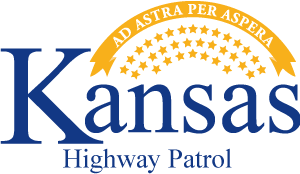The Kansas Highway Patrol uses 3 methods of measuring the speed of vehicles traveling on our highways.
– Radar: The most commonly used method of measuring the speed of other vehicles is Doppler Traffic Radar (Radio Detection And Ranging). Radar units used by the Patrol are capable of tracking the speed of vehicles while the patrol unit is in motion or stationary along the roadway. In addition, the radar unit is capable of measuring the speed of cars, trucks, and motorcycles traveling the same direction as the patrol car and those traveling in the opposite direction.
– Time/Distance: Using stopwatches and VASCAR devices, members of the Patrol measure the time it takes a vehicle to travel a known distance (such as a marked 1/8-mile speed enforcement lane). Patrol aircraft also use this method to assist ground units in stopping speeding and aggressive drivers.
– LIDAR: The newest device used by the Patrol to measure the speed of vehicles is Light Detection And Ranging (LIDAR).
LIDAR units give Troopers the ability to pick individual violators out of traffic by directing an infrared, eye-safe, laser beam onto the individual vehicle. LIDAR units are especially useful in areas with congested traffic and in highway construction zones.
All speed-measuring devices used by the Patrol are certified by the International Association of Chiefs of Police, the National Highway Transportation Safety Administration, and the manufacturer. Patrol personnel regularly check the devices to ensure they function properly.

